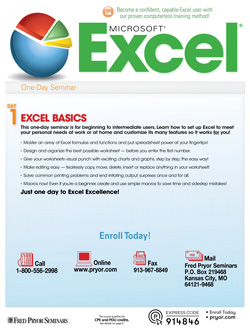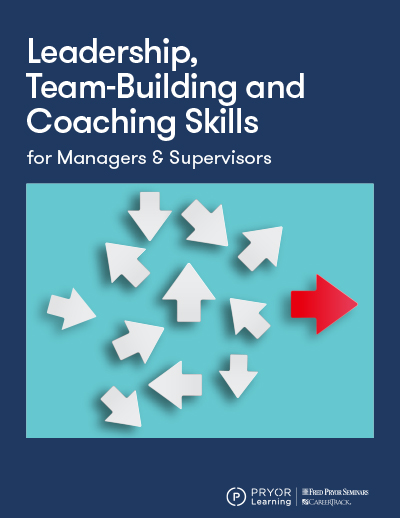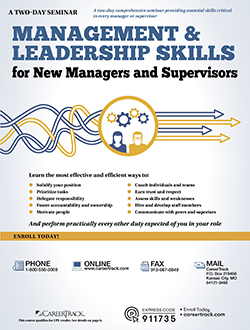Skills-Based Hiring: Finding the Right Person for the Right Role

Skills-based hiring is a recruitment approach that focuses on a candidate’s specific abilities and competencies, rather than their educational background, years of experience or previous job titles. The goal of the approach is to identify individuals with the skills needed to effectively do a job, regardless of formal qualifications.
In skills-based hiring, employers identify and prioritize practical skills that are directly relevant to a job. The manager and Human Resources (HR) then design a recruitment approach that focuses on those skills to find the right candidate for the right job at the right time. Here are some examples of skills that an organization might seek as part of skills-based hiring:
- Technical abilities – Skills in a specific area of expertise, like software development, accounting, engineering, auditing, scientific skills or other domain-specific skills
- Critical thinking, analysis and problem-solving
- Project management, identifying outcomes and impacts and task sequencing
- Written and verbal communication and teamwork
Planning for Skills-Based Hiring
Engaging in skills-based hiring requires investment up-front. First, the hiring manager needs to determine the skills that are actually needed for open positions. Here are some common approaches and resources in this process:
- Job Descriptions: If there is a formal description of the position, it may already specify the essential skills required for the role, rather than listing preferred qualifications or experiences.
- Task Identification: Managers may need to break down the open job into the specific tasks and responsibilities that the ideal candidate would be doing. What does the role “look like” realistically on a day-to-day basis? Consider current and future needs – not necessarily just what the last person did.
- Employee and Stakeholder Interviews: While managers need to look to the future, it is also useful to talk to existing or former employees in similar roles to gather insights into the skills they find most valuable, and to clients and stakeholders about what skills they observe from the outside as being most important.
- Skill Brainstorming: Take time to identify the skills needed to perform each task that a qualified candidate would do. This may include both technical and soft or interpersonal skills.
- Benchmarking: Managers may want to look at job postings from similar organizations or industry experts to see what skills are commonly listed. Professional social media sites may be a good way to review both job listings and possible candidates with similar titles in a similar industry – what skills are listed as critical or that candidates post as benefits in their profiles?
- Organizational or Industry Models: Some organizations and industries already have competency frameworks that outline essential skills and behaviors for specific roles or levels in an organization. These frameworks can help standardize skill requirements, though managers will need to customize them to align with specific team and role needs.
Next, the manager needs to design a recruitment approach that aligns with the identified skills. This may include recruiting peers or subject matter experts to support a skills evaluation.
SAVE $10 AND TRAIN ON THIS TOPIC TODAY
- Skills Assessments or Simulations: Candidates may need to complete tests or practical tasks that demonstrate their abilities. For example, managers may need to design a programming task to assess software development skills. These assessments take time to design.
- Work Samples: Requesting portfolios or examples of past work can provide insights into a candidate’s skill level. This requires objective criteria or a checklist to evaluate submissions across candidates.
- Situational Judgement Tests: These help gauge how candidates might handle real-world job scenarios. For example, an “in box” exercise requires candidates to prioritize and act against a specific task list in a set amount of time. This is often used to assess prioritization and delegation skills. Someone, however, needs to design and then administer and score the responses to the test.
- Behavioral Interviews: It is important to balance technical and project skills with soft skills, like conflict management, negotiation, political savvy and stress management. Here is an example of a behavioral question: “Name a time when you needed to ___ (skill you are seeking). Describe the situation, what you did, what the results and impacts were, and what you would do the same or differently next time.” Look for specific stories, an ability to place that story in a broader context, and the ability to clearly describe and reflect on actions taken.
Benefits and Challenges of Skills-Based Hiring
There are many advantages and benefits to skills-based hiring that may make the investment worth it for specific roles:
- Better Job Fit: By focusing on skills, employers can select candidates who are more likely to perform effectively against organizational needs.
- Improved Performance: Organizations that adopt skills-based hiring may see improvements in overall team performance, as they are better equipped with the right talent.
- Increased Retention: Employees hired for their skills may feel more competent and satisfied in their roles, leading to higher retention rates.
- Wider Talent Pool: This approach encourages candidates from various backgrounds to apply, including those without traditional qualifications. This approach may broaden the candidate pool and reduce bias in hiring, as it focuses on what candidates can do rather than their background.
- Skills-based hiring can be more adaptable to changing workplace and industry demands, as it allows employers to identify candidates who can learn and grow within the role.
There are also challenges involved in skills-based hiring, as it goes far beyond a resume review and casual interview. It is important to be realistic as to whether an organization or team can effectively complete this approach.
- Assessment Difficulty: It is complex and time-consuming to design effective assessments or objective tests that accurately measure skills and that can be fairly administered and scored.
- Resistance to Change: Traditional hiring practices may be deeply ingrained, so helping hiring managers make the switch requires change management, training and retrospective analysis to assess outcomes and impacts.
- Potential Gaps: Skills are important, but too heavy a focus on technical and analytical skills may overlook other factors, such as culture fit and soft skills. Unfortunately, those softer skills are also harder to objectively assess.
When done well, skills-based hiring aligns recruitment practices with the realistic needs of a modern workplaces. Focusing on what candidates can do, rather than where they come from, can help managers and organizations improve talent acquisition strategies, be more inclusive, and improve overall performance.
Case Study: Applying Skills-Based Hiring for a Technology Job
Here’s a case study of how skills-based hiring played out at a technology firm. Manager Lisa was struggling to fill a data analyst position. Despite weeks of reviewing resumes, she kept having the same problem: candidates had impressive degrees and previous job titles, but no real evidence they could effectively analyze data. She turned to Raj, the HR lead, for advice.
Raj suggested, “What if we focus on the skills they’ll use on the job? Let’s design the process to let candidates prove their abilities, rather than relying on resumes alone.” Lisa agreed. Together, they revamped the job description, removing degree requirements and emphasizing the technical skills they truly needed: advanced data analytics, experience with the software package Python and data visualization. They also developed a practical task-based assessment. Candidates would analyze a real dataset, identify trends and create a dashboard—precisely the work the new hire would do.
The exercise was posted as part of the updated job announcement. When applications started coming in, Lisa was struck by the diversity of candidates. One submission stood out. Sarah, a freelancer with no formal degree, had created a dashboard that highlighted key trends, and uncovered insights Lisa hadn’t even considered. During the interview, Sarah explained her approach. “I’ve worked on projects for nonprofits where I had to find meaningful stories in messy data. This test let me show what I can actually do.”
Lisa was impressed. Sarah’s work was exactly what the team needed, and her perspective brought fresh ideas to the table. Six months after Sarah joined, her analyses were driving critical business decisions. Switching to skills-based hiring was transformative for Lisa and the organization. It allowed them to find the best person for the job and opened the door to incredible talent that might have otherwise been missed. Sarah was a perfect fit, and the company had a new hiring approach that truly worked.
Next Steps with Pryor
Transitioning to skills-based hiring draws on many competencies. The approach itself involves a range of skills, all supported by Pryor Learning’s extensive library of training.
- Strategic Thinking and Planning provides a great foundation for thinking about the skills needed to build a future-focused organization.
- Management & Leadership Skills for New Managers and Supervisors includes a range of skills you need to successfully navigate the different elements of supervision, including human resource management.
- Hiring Practices to Ensure Diversity and Inclusion covers ways to create a more inclusive recruitment program and strategy, including a focus on skills.
- Pryor’s Emotional Intelligence: The Keys to Working More Effectively with Others can help you identify the soft skills needed for a candidate to succeed in your organization.
- Trainings related Management and Leadership offerings help you develop the effective communication skills needed to implement skills-based hiring.



